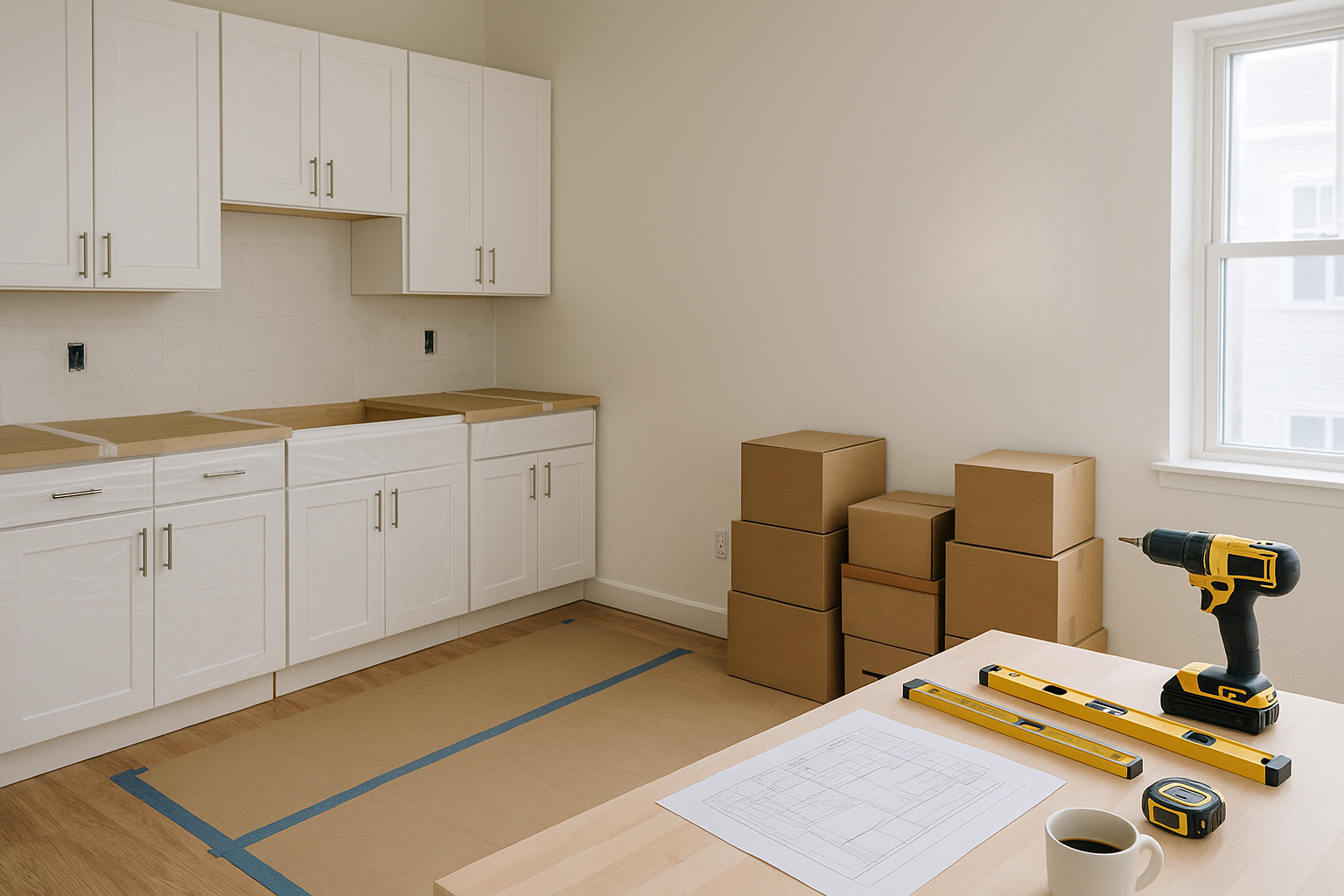The Real Reason Your Renovations Keep Causing Headaches
If your renovations end up delayed or over budget, the real culprit is your process—not your contractor. Learn how to streamline before demo day.

If your renovation projects frequently run behind schedule, go over budget, or surprise you with unexpected issues, it’s easy to blame contractors, suppliers, or even the weather. But in most cases, the real culprit is your renovation process not the people doing the work. Without a structured system for scoping, planning, and coordinating in place before demo day, even skilled teams can hit roadblocks, stall, and drive costs upwards.
This guide uncovers why weak renovation processes cause headaches and how to fix them. You’ll walk away with a repeatable system that empowers teams, cuts delays, and delivers smoother projects.
What Goes Wrong When the Process Fails
Before any tools appear on site, problems often begin stacking up:
- Undefined or shifting scope
- “Add a coffee bar here… oh, and change the backsplash.”
Without clarity, trades aren’t sure what’s included, budgets evolve, and projects drift off track.
- “Add a coffee bar here… oh, and change the backsplash.”
- Delayed material orders
- Waiting for demo day to place orders leads to days or weeks of idle time when materials arrive late.
- Waiting for demo day to place orders leads to days or weeks of idle time when materials arrive late.
- Uncoordinated trade schedules
- When subcontractors overlap or block each other inadvertently, work halts, rework becomes likely, and progress is disrupted.
- When subcontractors overlap or block each other inadvertently, work halts, rework becomes likely, and progress is disrupted.
With no advance planning, confusion becomes the norm and you end up paying for it.
Step 1 – Lock the Scope Before You Begin
Prevent confusion by deciding exactly what’s included:
- List every space and finish: cabinets, countertop, tile, lighting, plumbing, paint down to brand and color codes.
- Freezing requirements after the scope is finalized. Any mid-project adjustments need change orders.
- Document clearly, then confirm every party understands and agrees.
This step removes ambiguity, controls budgets, and gives crews a dependable plan.
Step 2 – Align Trades with a Pre-Demo Kickoff
A quick coordination meeting transforms chaos into collaboration:
- Gather all subcontractors plumbing, electrical, painting, flooring.
- Provide a clear scope and layout diagram.
- Walk through sequencing: who does what and when.
- Pin down transitions and shared access (e.g. staging zones, key handoffs).
- Make sure everyone sees the same schedule and knows dependencies.
This ensures trades work together rather than against each other.
Step 3 – Build a Realistic and Flexible Timeline
Too often, renovation timelines start as wish lists. You need a plan rooted in reality:
- Add buffers: 10–15% extra time allows breathing room for delivery delays or inspections.
- Sequence intelligently: like rough-in → drywall → paint → finish fixtures, not the reverse.
- Communicate publicly to all stakeholders: this is the realistic plan, not an aspirational one.
When teams know buffers are built-in, they work confidently not frantically.
How a Better Process Transforms Outcomes
- Fewer surprises: clear scope and timeline mean surprises are rare.
- Clear team handoffs: trades know when to walk in and when to stay out.
- Reliably controlled budgets: fewer unexpected costs = consistent returns.
- Calmer tenants and stakeholders: transparent timelines build trust.
- Less burnout, more performance: smooth sequence = better morale.
Real-World Example: Chaos to Calm
Before DOCI intervention:
- A unit renovation dragged on three weeks past schedule.
- Fixtures were reordered mid-stream.
- Tenants expressed frustrations; turnovers slowed.
After implementing process improvements:
- Scope finalized three weeks before work began.
- All trades aligned at kickoff.
- Including buffer days above expectations.
- Materials ordered and confirmed in advance.
Result: Delivered on time, within budget, and no tenant disruption a complete turnaround.
Best Practices for Smooth Renovations
To keep renovations on track, several best practices make a big difference. A central project dashboard ensures everyone can see the plan, status, and updates in real time. Holding a kickoff meeting fast-tracks alignment and clarifies expectations right from the start. Ongoing daily or weekly check-ins keep communication flowing and teams accountable, while strict material tracking helps avoid downtime caused by misplaced or delayed shipments. It’s also smart to implement buffer days into the schedule, which provides protection against unavoidable delays. Finally, having a clearly defined change order process prevents hidden costs and scope creep.
If your renovation efforts hit roadblocks too often, don’t blame the team fix the system. With a process focused on scope clarity, timeline planning, and coordinated execution, you’ll move from frustration to flawless results.
Let us create a space that exceeds your expectations

